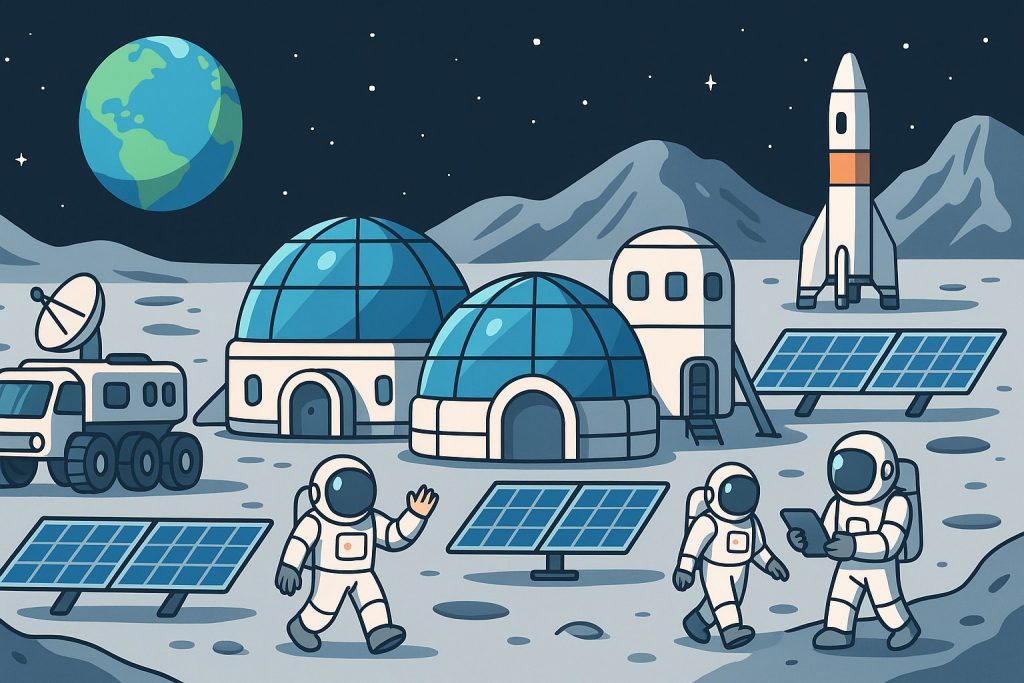As Earth’s closest celestial neighbor, the Moon has long fascinated scientists and dreamers alike. But today, the idea of lunar bases is shifting from science fiction to a real scientific and technological objective. With space agencies like NASA, ESA, and private companies such as SpaceX and Blue Origin investing in lunar exploration, building sustainable habitats on the Moon is becoming an achievable goal. These bases could serve as stepping stones for deeper space exploration and even long-term human settlement beyond Earth.
Why Build a Base on the Moon?
1. A Gateway to Mars and Beyond
Lunar bases could act as launch and refueling stations for missions to Mars and other planets. Due to the Moon’s lower gravity, launching from its surface requires significantly less energy than from Earth, making it an ideal stopover.
2. Scientific Discovery
The Moon offers a unique environment to study the origins of the solar system. A base would enable long-term research in astronomy, geology, and even biology in low-gravity environments.
3. Resource Utilization
The Moon holds resources such as water ice in permanently shadowed craters, which can be converted into drinking water or split into hydrogen and oxygen for fuel and breathable air. Lunar regolith (soil) also contains useful minerals and could be used in 3D printing building materials.
Key Technologies for Lunar Habitats
1. Radiation Protection
Unlike Earth, the Moon has no magnetic field or thick atmosphere to shield against cosmic radiation and solar flares. Engineers are exploring protective solutions like underground habitats, regolith-based shielding, or inflatable modules with radiation-absorbing layers.
2. Energy Generation
With two-week-long lunar days and nights, power supply is a challenge. Solar panels placed on lunar “peaks of eternal light”—regions near the poles that receive near-continuous sunlight—are a promising solution, backed by energy storage systems for night periods.
3. Life Support Systems
Maintaining breathable air, clean water, and food supply is essential. Closed-loop life support systems that recycle air and water, as well as hydroponic farms for growing food, are under development.
4. Robotics and AI
Before humans arrive, robotic systems will handle site preparation, construction, and maintenance. AI will play a vital role in navigation, health monitoring, and decision-making in high-risk environments.
5. 3D Printing and In-Situ Construction
Transporting building materials from Earth is costly. 3D printing using local regolith is a cost-effective solution for creating habitats, roads, and landing pads directly on the Moon.
Challenges to Overcome
Despite progress, several challenges remain:
- Extreme temperature variations (from +127°C to -173°C)
- Lunar dust, which is sharp and corrosive
- Communication delays
- High costs and long-term sustainability
However, with international cooperation and technological innovation, these challenges are gradually being addressed.
Glossary
- Lunar base – A permanent or semi-permanent human habitat on the Moon.*
- Cosmic radiation – High-energy particles from space that can damage living tissues and electronics.*
- Regolith – The layer of loose, dusty material covering solid rock on the Moon’s surface.*
- In-situ resource utilization (ISRU) – The practice of using local materials to support exploration missions.*
- Closed-loop system – A life support system that continuously recycles air, water, and waste materials.*


